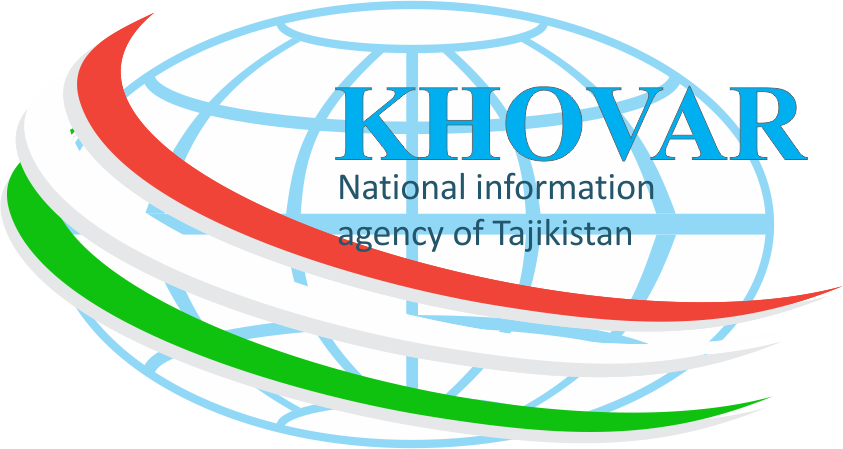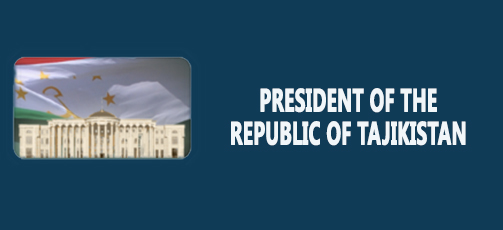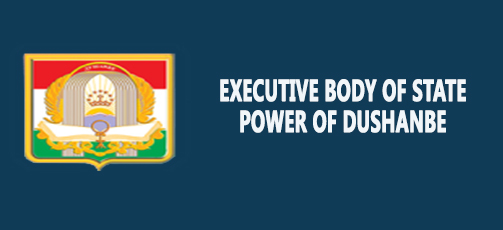President Emomali Rahmon Openins the Historical and Cultural Complex Qalai Khujand after Reparation and Renovation
Read also
DUSHANBE, 11.04.2024 (NIAT Khovar) – On April 11, the Founder of Peace and National Unity – Leader of the Nation, President of the Republic of Tajikistan, Honorable Emomali Rahmon, on the third day of his working trip to the cities and districts of Sughd Province, visited the historical and cultural complex “Qalai Khujand” (Khujand Fortress) and put in commission after restoration works this magnificent historical structure, which has earned reputation as a symbol of courage, valor, self-knowledge and patriotism of the Tajiks, and played an effective role in protecting the freedom and peaceful life of the people of this territory as a reliable fortification.
At the entrance of the fortress, the creative and unity-inspiring Leader of the Nation, Emomali Rahmon, was welcomed with great sincerity and respect by the residents of the city of Khujand representing various professions and occupations and people of science and culture of the region.
Measures related to the revival and restoration of Qalai Khujand in the historical place of this precious ancient heritage of the Tajik people were implemented with the initiative and direct guidance of the President of the Republic of Tajikistan, Honorable Emomali Rahmon, within 6 years at a high level and quality.
It is worth emphasizing that before the start of project work on the revival and restoration of Qalai Khujand, with the involvement of specialists from the Ministry of Culture, the Architecture and Construction Committee, archaeologists, historians and ethnographers, archaeological, engineering, topographical, geological, excavation works, scientific and practical research were carried out on the site of the building, and detailed and accurate conclusions were presented. In this way, on the basis of the proposal of scientists and specialists, the works of reviving and restoring the fortress were carried out, and the historical elements of this ancient monument were fully preserved.
According to the information, the total area of the built and restored structures of Qalai Khujand is 6 hectares.
The results of the archeological excavations of the last few years and the rare finds show that Qalai Khujand has an ancient history, and its preservation is necessary and important for the presentation of the history, culture and civilization of the Tajik nation.
Qalai Khujand as a reliable fortification, which has a history of three thousand years, was revived and restored with the funding of the Executive body of state power of Sughd Province.
On the basis of the project, the walls around the fortress, its arches and gates have been restored, the foundation of an administrative building, artisans’ stalls, a national canteen, a model of ancient houses and courtyards of the city of Khujand, a hotel and a museum, a tea house, roofed counters for the preparation of national dishes of the Tajik people, baths, service points and other auxiliary facilities have been built. In particular, in the southern part of Qalai Khujand, in accordance with the requirements of today’s time, 8 spacious crafts stalls have been created, where the products of the artisans, such as many types of confectionery products, paintings, pottery, carvings, various knives, handmade carpets, national men’s and women’s clothes, atlases, jewelry, and national musical instruments are on display.
It was emphasized that in ancient Sughd, crafts and handicrafts were highly valued, and the original heirs of this culture and civilization, who have a special popularity, have made great efforts for the development and revival of folk crafts at all times. Despite many efforts, most of the folk crafts went into oblivion and almost disappeared in the course of history. However, during the period of independence, with the initiative of the Leader of the Nation Emomali Rahmon, folk crafts were revived and favorable conditions were created for the activities of artisans, one of the prominent examples of which is the creation and organization of craft paths in the historical Qalai Khujand.
The unique action of the Head of State made it possible for artisans to be engaged in their work on these stalls and to be able to show their products to many guests and tourists who come to Khujand city and see its magnificent fortress.
It is worth noting that today in the cities and districts of Sughd Province handicraft products are produced based on more than 200 folk crafts, and craft training centers have been established in the regions, the provision of benefits and reliefs has created a wide opportunity for the development of the industry.
It was reported that more than 15 thousand artisans are active in the cities and districts of Sughd Province. The production of products and items prepared by artisans is generally considered one of the sectors of the development of the tourism industry and has a profound impact on the economic status of artisans and the well-being of the population.
In this area, the establishment of a national canteen is considered important and timely for preservation, revival and presentation of national dishes.
The magnificent building of the exhibition halls of the history and culture of the Tajik people, which has an area of more than 3 thousand 365 square meters, consists of one main dome, two medium domes and 4 small domes.
In the decoration of the building, which has 5 exhibition halls, the national art of Tajik architecture, such as carving, painting, kundal painting, artistic processing of wood, stone, plastering, tiling, carving, etc., has been widely used.
In the hall «Khujand scientific-literary area», which is painted with national architectural art, information is collected about the lives and activities of Khujand’s scientists, famous Tajik poets and famous artists, speeches of scientists and intellectuals of the past and present, speeches in honor of Khujand and its fortress, speech by the Leader of the Nation, Emomali Rahmon, about the history of the fortress and other necessary materials. In this hall, the statues of 4 famous people of Khujand — Ziyouddin Porsi, Shaidoi Khujandi, Sadruddini Khujandi and Sulton Umarov, as well as items related to science and literature, such as manuscripts, pencil cases, tablets, pots, jugs and water bottles with inscriptions, are on display.
The hall of «Fine arts and crafts» includes a map of the localities of artists of Khujand city and photos of various artists of the region, and some examples of folk arts, such as painting, embroidery, coppersmithing, kundal making, and musical instruments.
The «Independence of Tajikistan» hall begins with a bas-relief prepared by artists Davron Rahmatzod and Munira Tursunova. This relief begins with the announcement of the Declaration of Independence, it reflects the period of the civil war, the process of the fateful session of the XVI session of the Supreme Council of the Republic of Tajikistan, election of Emomali Rahmon as the Head of State, the implementation of strategic goals, the strengthening of national unity, the domestic and foreign policy of the country and the global initiatives of the Leader of the Nation.
In the basement part, there is a hall for the exhibition of ancient finds of the Sirdarya interfluve region, coins of various historical periods and other exhibits, and at the same time there is a place for holding conferences, meetings, service and technical rooms, and art workshops.
Taking into account the high historical value of the collected sights, the Honorable Head of State Emomali Rahmon tasked the officials to promote the activity of the complex in order to acquaint the citizens of the country, the young generation and domestic and foreign tourists with the rich history and civilization, and attract the best specialists to present its corners.
Another initiative that was implemented in the north-eastern part of the fortress is the construction of the ancient Khujand neighborhood. Houses and courtyards mainly belong to the working class, merchants, artisans and other sections of the cultural society of the city, and its revival and construction will provide an opportunity to present the ancient traditions of urbanism in Khujand to the world.
The foundation of the model of the ancient houses and courtyards of the city of Khujand was implemented mainly with the advice and recommendations of ethnographers. These houses are completely built with natural materials, including mud, clay and wood, and the gates, pillars and roofs of ancient houses are completely carved, and the paintings are mostly done by experienced artists. In this ancient neighborhood, the effective and rational use of the land near the courtyard is also an example and worthy of praise.
Ethnographers believe that these courtyards and houses reflect the way of life, livelihood, and beyond that, the customs and traditions of the people of the city in historical periods, and the implementation of this initiative has a clear role in the formation of the national architectural art of the Tajik people, which has been recognized by the world. From now on, in these 8 ancient courtyards, each of which covers an area of 6 hundred acres of land, artisans are engaged in calligraphy, carving, painting, carpet weaving, needlework, carpentry, sewing, stone carving, blacksmithing, and pottery.
A bath house, a hotel and a national tea house were built here as a pillar of the historical settlement.
In the national teahouse, which is designed for 60 people in the territory of Qalai Khujand, the performance of the high art of carving, plastering, cross-cutting and painting gave more splendor to the beauty of the exterior and interior of the building.
Adjacent to the national tea house, there is also a stall for preparing various breads and sambusas and a large list of national dishes, including four stoves and an oven.
The area of the fortress and its internal corridors are decorated with the use of Khujand stones on an area of 12,500 square meters, while the area of landscaping is 5,000 square meters.
In the territory of the fortress, the construction of two large fountains and four wooden pavilions, carved by skilled artisans from the city of Isfara, Sughd Province, under the guidance and advice of Usto Burhon, adds more splendor to the beauty of this historical and cultural place.
More than 20 construction companies, a large number of skillful Tajik craftsmen participated in the process of revitalization and restoration of Qalai Khujand, and the quality of works related to revival and restoration in this historical structure was under the constant control of the customer – the Main Construction Department of the Executive body of state power of Sughd Province.
The construction, development and preservation of historical monuments, which are completed by the direct actions and initiatives of the Honorable Head of State Emomali Rahmon, have raised the attention of tourists and lovers of the ancient history and culture of Tajiks.
It is important to remind that the history of Qalai Khujand is known not only by the people of the country, but also by the world. In the course of excavations, several historical cultural layers, including the remains of the archaic wall of the city of Khujand, the remains of the grain storage room and large-sized clay vessels belonging to the seventh and fourth centuries BC, were found in the territory of the fortress. The discovery of historical cultural layers in the lower part of the governor’s palace proves that Qalai Khujand has a history of 3000 years.
We remind that the historical Qalai Khujand is located in the center of the city, on the left bank of the Sirdaryo River.
At the same time, it should be said that Qalai Khujand was included in the list of 10 interesting tourist attractions of Tajikistan by the Tourism Development Committee of the country.











 President Emomali Rahmon makes personnel appointments
President Emomali Rahmon makes personnel appointments Commentary to orders of the President of the Republic of Tajikistan on the republican competitions «Tajikistan – My Dear Homeland», «Science – Dawn of Enlightenment» and «Book – Dawn of Knowledge» in 2026
Commentary to orders of the President of the Republic of Tajikistan on the republican competitions «Tajikistan – My Dear Homeland», «Science – Dawn of Enlightenment» and «Book – Dawn of Knowledge» in 2026 Emomali Rahmon, Vladimir Putin discuss strengthening strategic partnership between two countries
Emomali Rahmon, Vladimir Putin discuss strengthening strategic partnership between two countries New Year Address of the President of Tajikistan to the Nation
New Year Address of the President of Tajikistan to the Nation Meeting of the Government of the Republic of Tajikistan
Meeting of the Government of the Republic of Tajikistan President Emomali Rahmon attended inauguration of administrative building in military unit No. 3503 of Internal Troops in Bokhtar
President Emomali Rahmon attended inauguration of administrative building in military unit No. 3503 of Internal Troops in Bokhtar Head of state Emomali Rahmon attended inauguration of additional educational building of the Innovative Medical College in Bokhtar
Head of state Emomali Rahmon attended inauguration of additional educational building of the Innovative Medical College in Bokhtar President Emomali Rahmon attended opening of Bokhtar State University’s student dormitory
President Emomali Rahmon attended opening of Bokhtar State University’s student dormitory President Emomali Rahmon participated in commissioning of an educational facility and an industrial enterprise in Levakant and Vakhsh
President Emomali Rahmon participated in commissioning of an educational facility and an industrial enterprise in Levakant and Vakhsh President Emomali Rahmon attended opening of secondary school No. 17 in Bokhtar
President Emomali Rahmon attended opening of secondary school No. 17 in Bokhtar President Emomali Rahmon held a meeting with orphans, gifted students, winners of republican competitions in of Bokhtar
President Emomali Rahmon held a meeting with orphans, gifted students, winners of republican competitions in of Bokhtar














